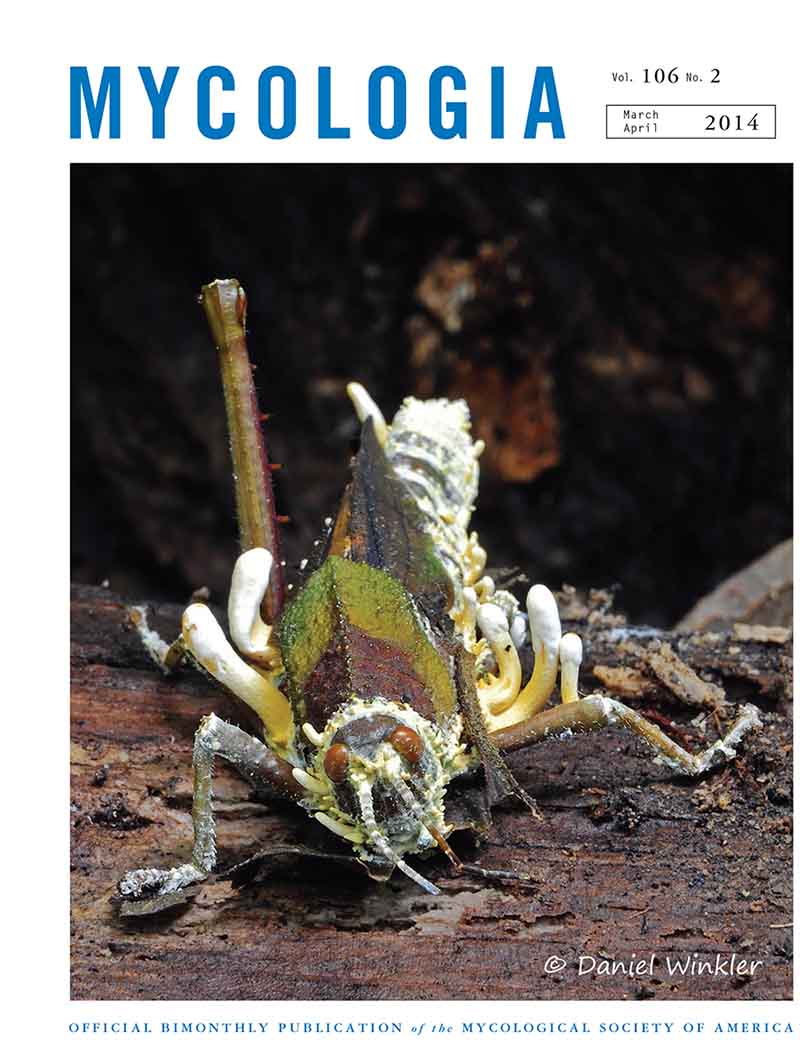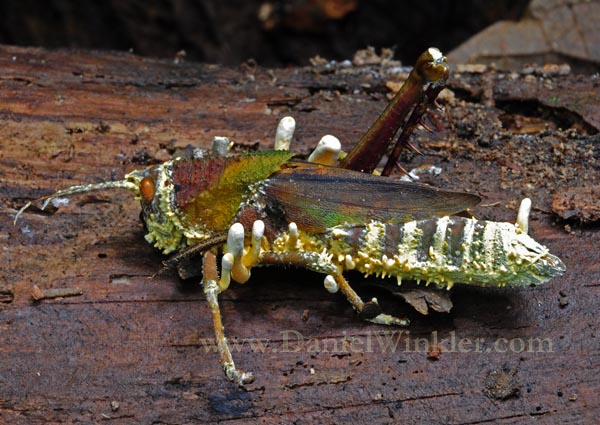With the help of Tatiana Sanjuan, Colombian Cordyceps expert and friend, my photo of Cordyceps acridophila growing on a grasshopper (Agriacris plagiata, Orthoptera: Romaleidae) made the cover of Mycologia for an article on new Amazon Cordyceps species, what an honor! The article is entitled:
Entomopathogens of Amazonian stick insects and locusts are members of the Beauveria species complex (Cordyceps sensu stricto)
by Tatiana Sanjuan, Javier Tabima, Silvia Restrepo, Thomas Læssøe, Joseph W. Spatafora, and Ana Esperanza Franco-Molano
In: Mycologia 2014 106:260-275
When Nicole Cook found this Cordyceps during our January 2012 Mushroaming Bolivia trip, it was still known as Cordyceps locustiphila.

Abstract: In the Amazon the only described species of Cordyceps sensu stricto (Hypocreales, Cordycipitaceae) that parasitize insects of Orthopterida (orders Orthoptera and Phasmida) are Cordyceps locustiphila and C. uleana. However, the type specimens for both taxa have been lost and the concepts of these species are uncertain. To achieve a more comprehensive understanding of the systematics of these species, collections of Cordyceps from the Amazon regions of Colombia, Ecuador and Guyana were subjected to morphological, ecological and molecular phylogenetic studies. Phylogenetic analyses were conducted on partial sequences of SSU, LSU, TEF, RPB1 and RPB2 nuclear loci. Two new species are proposed including C. diapheromeriphila, a parasite of Phasmida, and C. acridophila, a parasite of the superfamily Acridomorpha (Orthoptera), which is broadly distributed across the Amazon. For C. locustiphila a lectotypification and an epitypification are made. Cordyceps locustiphila is host specific with Colpolopha (Acridomorpha: Romaleidae), and its distribution coincides with that of its host. The phylogenetic placement of these three species was resolved with strong support in the Beauveria clade of Cordyceps s. str. (Cordycipitaceae). This relationship and the morphological similarity of their yellow stromata with known teleomorphs of the clade, suggest that the holomorphs of these species may include Beauveria or Beauveria-like anamorphs. The varying host specificity of the beauverioid Cordyceps species suggest the potential importance of identifying the natural host taxon before future consideration of strains for use in biological control of pest locusts.
Key words: Anamorph-teleomorph connection, entomopathogenic fungi, host specificity, Neotropics, Orthoptera, phylogeny
Here another shot of the same unlucky grasshopper seen in Madidi National Park, Beni, Bolivia
